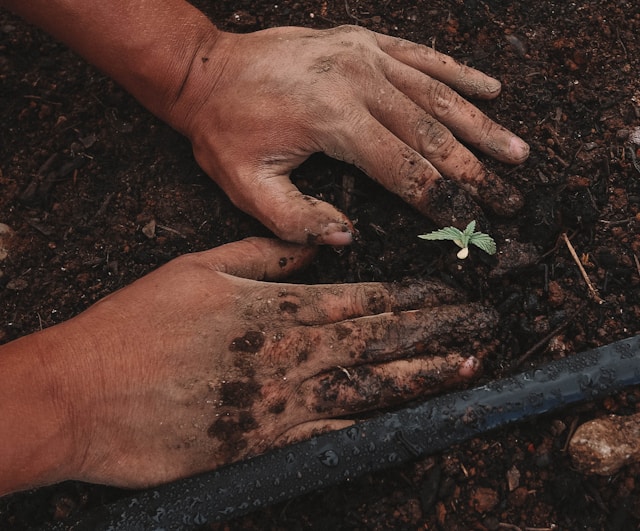Abstract
This is the very first seed of my personal digital garden ever. My 'hello, world', and as such, sometimes in the tech context, that expression means the mark of a new beginning, the very first simple but complete achievement. This seed, as the very first one of this digital garden, is not an exception of such kind of rite. However, some attention and interpretation of such rite is worth doing.
Hello, World!
Following the initiatic and venerable tradition of the C programming language, perhaps one way to get started some project is to mark its first step with some kind of memorable ritual. That is what ‘hello, world’ means: Express to the world, to everyone out there that something new is here, a new beggining was created, a new entity has come to life.
This seed, the very fist one of my personal digital garden, is then, my ‘hello, world’ in Digital Gardening. Now, please imagine here all the fanfare with trumpets, French horns and percussion as you can; imagine all that scene as the musical announcement of this marvelous event. And here is our greeting to the world:
'Hello, Digital Garden!'
Why having a ‘hello World’?
As far as I know, the inventors of this kind of ritual were Brian W. Kernigham and Dennis M. Ritchie in the book ‘The C Programming Language’ published in 1978. There, in the page 5 of their famous book, they wrote: ‘The only way to learn a new programming language is by writing programs in it.’ It stills appear like a nice invitation to start diving into the world of C in a learning by doing approach. For me, that invitation is a window for a great opportunity: learning from two great computer scientists about their own invention. It is like have been chosen to receive a direct revelation from the creators of C themselves.
Besides the hyperbole, there is something that resonates when I read that sentence again: The only way to learn something is through experience, feeling and relation with the things I want to learn. Another way to express the same idea may be learning by doing or learning by direct exposition with the subject matter itself. However, learning seems to bea a process that also need guidance, mentorship or coaching, at least at the beginning. Perhaps we need both direct experience and guidance, because learning is trying to deepen the relationship we have with the matter we want to learn. Lerning is a relation.
Returning to the book, the tone of the next part of the paragraph seems to me like the authors were expressing a mathematical theorem: ‘The first program to write is the same for all languages: Print the words hello, world. This is the basic hurdle;’ Since then, I know that starting something new implies leap over some basic hurdle. The meaning of hurdle may be given by the specific context of the new thing, but perhaps in a more general sense, that sentence evokes what starting something is: doing the ‘hello, world’ of your own endeavor.
According to the authors, when learning a programming language, the first hurdle is to print the words hello, world. Other possible interpretation of such words is that every path we intent to do must start with the first step: the step of leap over the basic hurdle. Each one may have the precise words to give meaning to her own initial hurdles. Of course, there will be more hurdles to leap over, but the very first one is very meaningful because it is the temporal mark of the new beggining, and that is the origin of the myths and rituals of passages and origins.
That is precisely the meaning of this seed: it is the ‘hello, world’ of my personal digital garden. Perhaps in a broader sense, the first program to write is the same for all (languages, endeavours, initiatives, enterprises, and so on). It feels very good, I have to mention it, and planting this seed is having hope for its growth.

Photo by GreenForce Staffing on Unsplash
The First Step
At the end of the day, it seems that everything starts with the first step. That is the action that marks the human capability to initiate, generate or create new things. From that first step, it is a matter of following what the Moira seems to assign to everyone. From the first step to the starts and beyond.